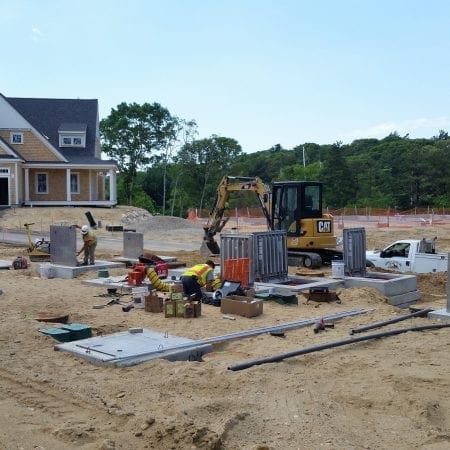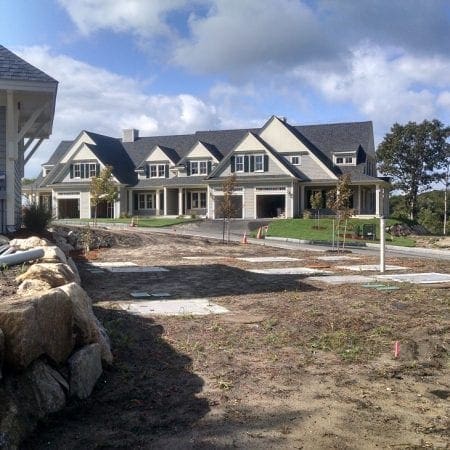Nitrogen Reduction on Cape Cod
When the owner of a marina overlooking Buzzards Bay in Cataumet (a small area of Bourne, MA on Cape Cod) decided to develop 15 new luxury townhomes, he knew wastewater would be a central issue. Over the years, he noticed large algae blooms had developed in the bay due to high nitrogen loading from the marina (which includes a restaurant) and the surrounding homes that were all using conventional septic systems. Instead of further contributing to the deterioration of the water quality, the developer decided to do his best to actually reduce the nitrogen loading. It was these efforts that lead him to AquaPoint.
As is typical of AquaPoint, from the outset of the project we worked closely with the developer and his consulting engineer to design a system specific to his needs that would serve both the new townhomes and take the marina off conventional septic. In addition, the AquaCELL system was designed with enough capacity to serve 55-65 homes in the surrounding Cedar Point neighborhood*. That being said – the challenges this project posed were significant: primarily we had to design something with a small footprint that would also essentially disappear into the landscape. Prospective buyers of brand-new, $1M condos would not be impressed at having to deal with the sights, sounds, or smells of a wastewater treatment system.
The solution is a five-stage MBBR (Moving Bed Biofilm Reactor) with flow equalization and secondary clarifiers followed by UV disinfection. Carbon & alkalinity are also supplemented to help treat the effluent to permit standards, which are quite rigorous. In order to comply with the challenge of keeping everything out of sight and out of mind (and nose, so to speak), all tanks are completely below grade and all ancillary equipment (e.g. – control panel, chem feeds, blowers, etc.) are housed in a building that doubles as the pool house for the community swimming pool. The system went online in the summer of 2017 and below you can see some recent data showing everything is working (and flowing) smoothly!
Some notes on the table below: BOD = Biochemical Oxygen Demand; TSS = Total Suspended Solids; TN = Total Nitrogen. The parenthetical numbers represent permit standards from the Massachusetts Department of Environmental Protection. While the MDEP won’t change the permit, the Coalition of Buzzards Bay requires <5 on TN, and as you can see the system is adhering to that standard as well.
| BOD (<30) | TSS (<30) | TN (<10) | |
| January 2019 | <10 | <2 | 2.7 |
| February 2019 | <10 | 3.7 | 3.3 |
| March 2019 | <10 | <2 | 3.0 |
*Note: at time of this blog post, funding has not been secured by these homes to tie into the plant, but we really want to praise the developer’s vision of potential further reduction of nitrogen and improvement of the water quality.






